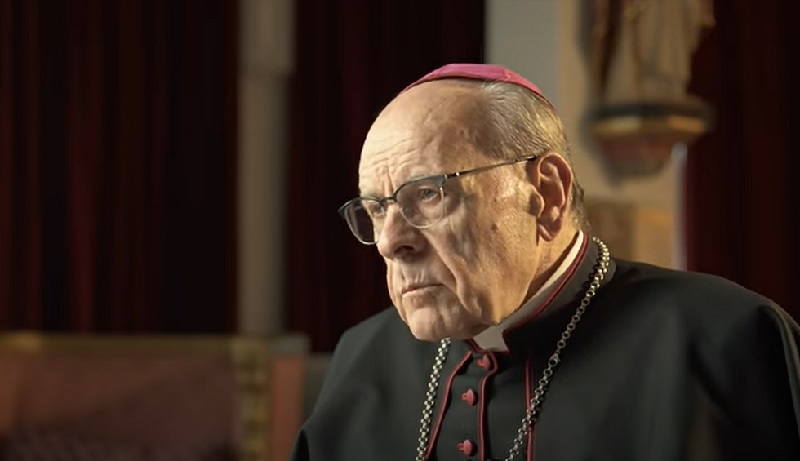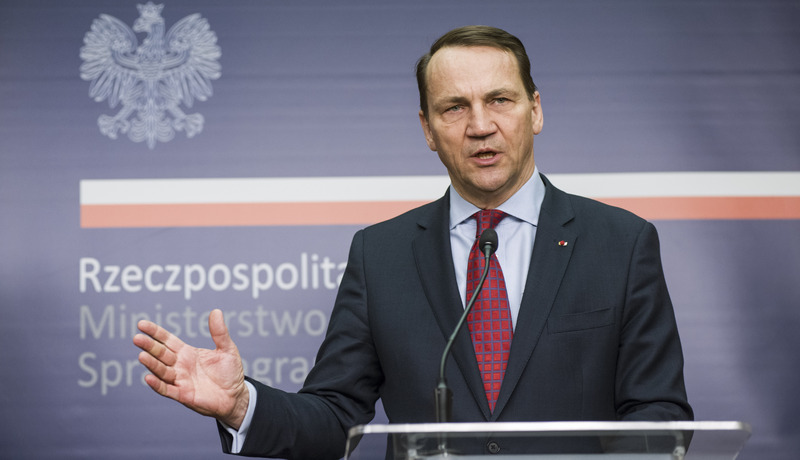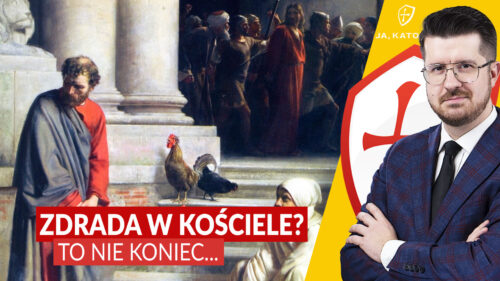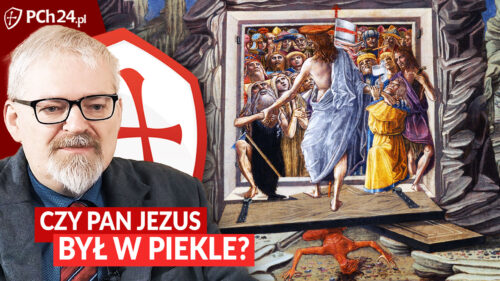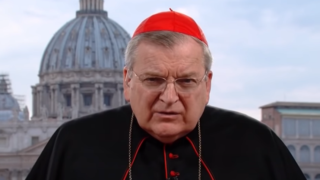Since the dawn of the Church’s social activities the sexual ethics has been one of the conflict zones between Christians and the pagan world. Christianisation meant not only abandoning pagan cults but also going away from the former way of life, including the departure from sexual debauchery characteristic for the late ancient times and putting evangelical ideals such as moderation, modesty, purity and abstinence into practice.
This struggle ended with the success of Christianity which collapsed under pressure from barbarians from the great Greco-Roman civilisation, evangelising newcomers with success. However, the Medieval Age European Christianitas (Christianity) was made up by people whose way of life – created under the influence of Pagan customs of their ancestors – still left a lot to be desired. It was only tedious and persistent civilising work of the Church that gradually spread the manners worthy of Christ’s disciples among them and created a society that followed the Gospel’s rules in practice.
Wesprzyj nas już teraz!
These processes were disrupted – in some cases stopped, while in others slowed down – by anti-Christian revolutions of the Modern Age. It’s not a coincidence that the Protestant revolt, destroying the unity of Christianitatis, as well as anti-French revolution, which overthrown the Catholic monarchy, had their devastating impact also on a marriage which is the foundation of a Christian family creating a Christian society and civilisation. The first one questioned the indissolubility of marriage since Luther deprived it of the sacramental rank while the second one spread the legal understanding of marriage as a common civil contract resulting in the possibility of a divorce across the whole world. Sexual excesses of the revolutionaries in France gained an ideological base as an element of fighting with traditional morality, hence, with religion. This road was followed by the 19th-centry revolutionists as well as their Bolshevik successors who made divorcing even easier and promoted sexual liberation of the proletariat.
It was only neo-Marxists, disciples of the so-called Frankfurt School, who decided to create a new man not by his accelerated industrialisation but by questioning the whole former culture and – basing their revolution on different minorities – they started to “march through institutions”, creating ideological grounds for the revolution in the sexual sphere. They were aware that it was there, in the most intimate area, that the human identity was hidden. With the end of its confessors’ march through all the institutions of the contemporary world, the new pansexual culture, which proved to be extremely expansional anyway, became the dominant and actually the only officially functioning one. Its spreading around the globe was like a bursting cesspool: so-called free love which had various forms, pornography, prostitution, public offensive of homosexuality and other perversions, absurdity of the gender ideology, children’s system depravation – this stinky slime flooded the world leaving almost no one clean.
No wonder that today we experience the process opposite to the one that could be observed in the first centuries A.D. The post-Christian world, which started to indulge Pagan customs, is trying hard to have an influence on Christian communities, especially on the Catholic Church, forcing it to worship the golden calf of sex. Thus, inside the Church we can see various people and groups trying to change its teachings on morality and marriage. Did this process start in our times? The history of the dispute over contraception, which ended together with Pope Paul VI announcing the Humanae Vitae encyclical, shows that everything started much earlier.
Liberal conspiracy
Despite philosophical disputes about the beginning of a human life, the Church has always considered contraception and abortion as cardinal sins. However, in Protestant communities opinions about the acceptability of “birth control” became more and more popular since the beginning of the 20th century. This process ended with passing a resolution on the acceptability of contraception in 1930 by the Anglican congregation in Lambeth. The Church answered with the Casti Connubii encyclical by Pius XI announced on the last day of the same year in which the Pope expressed an explicit and vigorous condemnation for the acts of contraception. This doctrine was repeated in many speeches of his successor in the Holy See, Pius XII.
Meanwhile, in the early 1950’s such theologians as the German Jesuit, Josef Fuchs, Professor at the Gregorian University, and Bernard Häring from the Alphonsian Academy, tried to move the nouvelle theologie thesis condemned by the Popes to the area of moral theology. The institution promoting their opinions was a Catholic university in Leuven (Belgium) – a native university of the personalism theologian, Louis Janssen, whose teachings became the foundation for the view of affective, personal and existential character of moral principles for which the sovereign norm is no longer, as it was claimed so far, and objective nature but an individual’s consciousness.
Now wonder that those people and their views played a significant role in the works of the Second Vatican Council during which a small, but very well organised and extremely progressivist minority made an attempt to reinterpret the former teachings (and practice) of the Church in key areas as well as to adjust it to new times. One of the documents prepared by the preparatory committee, entitled On purity, virginity, marriage and family, repeated a traditional doctrine with regard to the main objectives of marriage, meaning procreation and educating offspring, as well as secondary objectives, such as mutual help given by spouses to one another in their life together, and a remedy to lust. This document suffered the same fate as other documents which were not even discussed because in the first days of the council fathers from the so-called Confederation of the Rhine (Germany, France, Belgium, Netherlands and Austria) enforced moving numerous issues to a large pool of subjects discussed as a part of preparing a document on the Church’s attitude towards the contemporary world.
There was a family and marriage sub-committee appointed with Emilio Guano, the bishop of Livorno, as its chairman and an already mentioned priest, Professor Bernard Häring, as its secretary. What’s interesting, also Pope John XXIII appointed an ad hoc committee consisting of eight experts whose aim was to work on the same issue. The committee appointed by the Primate of Belgium, cardinal Suenens, met for the first time in Leuven. The majority of its members were supporters of liberal orientation, especially after priests Fuchs and Häring had joined them.
On the birth control during the council
A new document prepared by the council sub-committee was called Schema XIII and it was significantly different than the schema created by the preparatory committee. Not only was the procreational objective of marriage subordinated to bond of love, but the question of birth control was to be left to the spouses’ conscience.
The problem is that those consciences were to be shaped under the influence of the more and more common views that the essence of marriage is regular and satisfying sexual intercourse and the proper quality of life can be achieved by limiting the birth rate. How could these two, seemingly contradicting, postulate could be met at the same time? The only answer could be contraception.
The question of contraception appeared in the council forum at the end of October 1964 during the discussion about schemas devoted to the Church and the contemporary world which made up the Gaudium et spes apostolic constitution. Cardinal Suenens said then: It is possible that we overly stressed the words from the Bible: “Be fruitful and multiply” while leaving other God’s words, “the two will become one flesh” in the shadows. At the same time he stressed that the role of the committee is to react to a huge problem connected with the current demographic explosion and overpopulation in many parts of the world. Thus, it turned out that the dispute was not only on theological matters or morality. Unexpectedly, the discussion was full of such terms, strange to the language of the Church, as “overpopulation” or “birth control”, as if taken directly from the Freemason and globalist report which was to be prepared by the Club of Rome almost a decade later.
Freemasons, abortionists, Neo-Malthusians
For the first time the idea of limiting the growth of human population was articulated at the turn of the 18th and 19th century by an English economist, Reverend Thomas Robert Malthus, who believed that excessive fertility of the poor resulted in negative economic phenomena. It is his name that the movement promoting birth control, Neo-Malthusians, used to call itself. The first organisation of this kind was the Neo-Malthusians League founded by a free-thinking couple: Charles Drysdale and Alice Vickery, who promoted the belief that marriage is legal prostitution and who were inspired by the views of a Freemason, Charles Bradlaugh, and a socialist and feminist, later an occultist, Annie Besant.
It was the Neo-Malthusians League that gave its support to a person who introduced the term of “birth control” to public discussion. In 1914 Margaret Sanger, an American anarchist, one of the founders of the 20th century feminism, the icon of the abortionists, announced in the (nomen omen) The Woman Rebel magazine the creation of the movement whose objective was to make a woman an absolute mistress of her own body. In 1916 she opened the first illegal “family planning” clinic in New York, with the support of Marie Stopes, an English eulogist of birth control. In 1921 Sanger funded the Birth Control League and co-organised the international Neo-Malthusian congresses. On 29 August 1927 the first International Population Conference organised by Sanger together with the League of Nations and the Rockefeller Foundation took place in Geneva. In this way antihuman and anti-natal views reached a wide audience.
However, the methods of limiting the number of births suggested at that time had no chance to gain a widespread approval and there was also few supporters of using state coercion in this matter. It was introduced on a large scale only by the communist China. The breakthrough was discovering and popularising a birth control pill by Dr Pincus whose research was supported by none other than… Margaret Sagner. The project was financed by a suffragist, Katharine McCormick, from the fortune of her husband-millionaire.
Orthodoxy and rebellion
John Rock, a Catholic who published a book called It’s time on the need of Catholicism to have a new approach towards birth control in 1963, participated in the works on the “Pincus pill”. An article of the already mentioned theologian from Leuven, Louis Janssen, in which he supported the thesis in Rock’s book, was published in the same year. This theologian came from the same university in Leuven, whose patron, Cardinal Suenens, suggested acceptability of contraception and repeated propagandist slogans of overpopulation spread by Neo-Malthusians during the council…
Let’s go back to the council for a moment then. It was heading to an end and professors and disciples of Leuven working on the Schema XIII were more and more certain of their success. When it came to cast the votes, as many as nine member of the committee expressed their support for contraception, three members voted against it, three refrained from voting and one was absent. However, when the committee’s report was presented to Pope Paul VI, he demanded a report from the orthodox minority. Thus, there were attempts to put pressure on the Pope by “leaks” of the pro-contraception report to the press. Despite his initial hesitation, Paul VI, didn’t give in – on 25 July 1968 he published the Humanae vitae encyclical which repeated the former teachings of the Church. The activities of the anti-population lobby came to naught.
An open rebellion against the encyclical launched by the Church intellectuals, clergy and episcopates in some countries showed how deeply the anti-natal views were rooted in the Catholic world already back then. The problem is that not only were the initiators of this rebellion not unequivocally condemned but they started to be, more or less consciously, followed by millions of Catholics around the world in their everyday life.
Piotr Doerre





